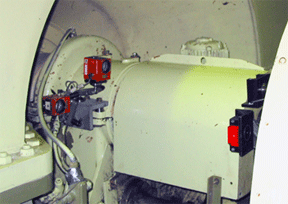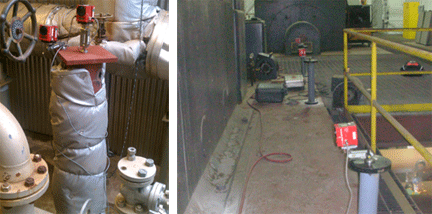In the previous article, we covered the advantages of continuous monitoring over the “snapshot” method for thermal growth measurement. We also highlighted the superiority of these methods over the existing simple thermal growth calculations and static “hot alignment checks.”
Continuous monitoring is a feature with the ROTALIGN® ULTRA LIVE TREND and the PERMALIGN® system. The most common question we receive with regards to these systems is “If LIVE TREND and PERMALIGN both offer continuous monitoring, why should I pay more for the PERMALIGN system?” The answer to that is that you have to pick the right system for the requirements of the job, and not just look at the price. The following are some factors to consider when choosing between LIVE TREND and PERMALIGN:
Monitoring Time
ROTALIGN ULTRA LIVE TREND was designed to provide short-term continuous monitoring. You could risk running out of power from the 9-volt laser battery for situations where the measurement lasts for more than 50 hours. Continuous computer operating time on battery power alone will be less (24-36 hours). This is still a generous amount of time to monitor and would suit most users.
PERMALIGN was designed to provide long-term continuous monitoring. The laser transducers are nitrogen sealed and purposely designed to maintain long-term stability for longer periods of time. In fact, the longest-running PERMALIGN job was 2 years and the data returned to within 1 thousandth of an inch of the starting position!
In thermal growth measurement, it is always better to have more than less. There have been many jobs where 1-day monitoring turned into a 1-month monitoring job. For those situations, you would be glad to have the long-term monitoring capability of PERMALIGN.
Temperature and Environment
ROTALIGN’s industry-leading 5-axis sensor (used with LIVE TREND) is designed to operate continuously within a range of 32°F – 113°F (ambient temperature). It features an IP65 rating against dust and water ingress protection.
PERMALIGN, features two laser transducers that operate within a range of 32°F – 158°F. PERMALIGN also features PCD sensors that operate in the infrared frequency spectrum. The result is a superior signal-to-noise ratio for harsh industrial (dusty and steamy) conditions. Because of this, PERMALIGN has our highest recommendation for boiler feedwater pumps (our #1 application for thermal growth monitoring), and steam and gas turbines.

Measurement Capability
Live Trend and PERMALIGN both work by measuring the inboard bearing housing movement to calculate shaft misalignment from positional changes occurring between the stopped and fully loaded final running condition of the machines. This method reliably gives information on the relative movement between two machines. PERMALIGN can be expanded to provide up to 16 channels of continuous monitoring capability. With a requirement of 2 sensors per coupling, this means that 8 couplings can be simultaneously monitored. This is an ideal solution for monitoring the movement of a boiler feedwater pump machine train.
PERMALIGN can also be expanded to provide absolute positional change monitoring capability. For this application, the sensors are mounted on sturdy pedestals attached to the foundation. The pedestals are often lined with insulation and have a continuous stream of groundwater pumped through them to ensure pedestal temperature stability. This permits monitoring of machine movement with respect to the foundation.

At this point, let us point out that we are comparing two very good systems that provide superior thermal growth measurement capabilities over other more primitive methods. The ROTALIGN ULTRA is in a class by itself for shaft alignment. The addition of LIVE TREND takes it beyond that level by providing continuous monitoring.
Since 1989, PERMALIGN has been in a class by itself for laser-based thermal growth monitoring. There is no laser system that can compare to the performance of PERMALIGN for thermal growth monitoring. Whether you choose LIVE TREND or PERMALIGN, remember that it is the requirements of the job that you must consider first. Once you have chosen the best system for your application, you can obtain true thermal growth compensation to increase the performance and lifespan of your rotating machinery.
Filed under:
Alignment by Daus Studenberg CRL
